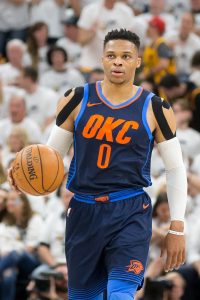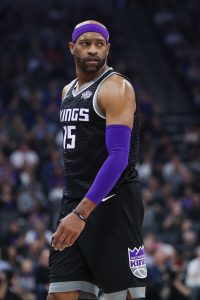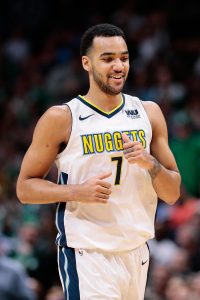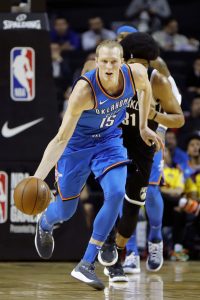When we examined the NBA’s longest-tenured head coaches last month, we noted that it has been a year of changes on NBA sidelines, with nearly a third of the league’s 30 teams having named new coaches since the 2017/18 season began. We haven’t seen the same level of turnover in teams’ front offices though — only three teams have replaced their top decision-makers this year, and one of those three clubs likely wouldn’t have made any changes if a series of Twitter burner accounts hadn’t forced their hand.
Although there have been more recent changes in the head coaching rankings than in front offices, the same name tops the list of longest-tenured head coaches and GMs/presidents: Gregg Popovich actually became the Spurs‘ president of basketball operations two years before he took over as the club’s head coach. Still, his place in San Antonio’s hierarchy is one of a handful of situations around the league that’s somewhat difficult to pin down.
While only one person holds a team’s head coaching job, that same team could carry a variety of front office executives with titles like general manager, president of basketball operations, or executive VP of basketball operations. In some cases, it’s not always which clear which executive should be considered the club’s head of basketball operations, or which one has the ultimate final say on roster decisions. That distinction becomes even more nebulous when taking into account team ownership.
For our list of the longest-tenured GMs/presidents in the NBA, we’ve done our best to identify the top exec in each front office. In the case of the Spurs, we’ve listed Popovich as the club’s top man, since he has the final say on basketball decisions, even though GM R.C. Buford plays a huge part in that process too. If there’s any ambiguity in a front office, we’ve added a note below to explain our thinking.
Without further ado, here’s the list of the NBA’s longest-tenured heads of basketball operations, along with their respective titles and the dates they were hired or promoted:
- Gregg Popovich, Spurs (president): May 31, 1994
- GM R.C. Buford has had a significant voice in personnel moves since becoming GM in 2002, but Popovich still has final say on those decisions.
- Pat Riley, Heat (president): September 2, 1995
- John Paxson, Bulls (executive VP): April 14, 2003
- GM Gar Forman has played a major part in personnel decisions since his hiring in 2009, but Paxson is believed to still be the head of basketball operations, reporting only to ownership.
- Danny Ainge, Celtics (president): May 9, 2003
- Ernie Grunfeld, Wizards (president): June 30, 2003
- Donn Nelson, Mavericks (GM/president): March 19, 2005
- Owner Mark Cuban is also heavily involved in basketball decisions and ultimately has final say.
- Daryl Morey, Rockets (GM): May 6, 2007
- Sam Presti, Thunder (GM/executive VP): June 7, 2007
- Dell Demps, Pelicans (GM/senior VP): July 21, 2010
- Executive VP of basketball operations Mickey Loomis is also in the picture here, but Loomis – who is also the top man in the New Orleans Saints’ front office – seems to let Demps handle basketball decisions for the most part.
- Bob Myers, Warriors (GM/president): April 24, 2012
- Neil Olshey, Trail Blazers (president): June 4, 2012
- Dennis Lindsey, Jazz (GM): August 7, 2012
- Ryan McDonough, Suns (GM): May 7, 2013
- Masai Ujiri, Raptors (president): May 31, 2013
- Tim Connelly, Nuggets (president): June 17, 2013
- Chris Wallace, Grizzlies (GM): May 19, 2014
- Initially named the Grizzlies’ GM in June 2007, Wallace was demoted in 2012 as Jason Levien assumed control of basketball operations. Wallace regained his front office power in May 2014.
- Vlade Divac, Kings (GM): March 3, 2015
- Sean Marks, Nets (GM): February 18, 2016
- Tom Thibodeau, Timberwolves (president): April 20, 2016
- Magic Johnson, Lakers (president): February 21, 2017
- Kevin Pritchard, Pacers (president): May 1, 2017
- Jeff Weltman, Magic (president): May 22, 2017
- Travis Schlenk, Hawks (GM): May 25, 2017
- Jon Horst, Bucks (GM): June 16, 2017
- Koby Altman, Cavaliers (GM): June 19, 2017
- Steve Mills, Knicks (president): June 28, 2017
- Lawrence Frank, Clippers (president): August 4, 2017
- Mitch Kupchak, Hornets (GM/president): April 8, 2018
- Ed Stefanski, Pistons (senior advisor): May 24, 2018
- The Pistons have not technically named a president of basketball operations or general manager to replace Stan Van Gundy, but Stefanski has been making personnel decisions this offseason and serves as the de facto head of basketball ops.
- N/A, Sixers
- Head coach Brett Brown has been the Sixers’ interim president of basketball operations since Bryan Colangelo‘s dismissal, but Philadelphia still intends to hire a permanent replacement.
Information from Basketball-Reference was used in the creation of this post.


 Denver Nuggets
Denver Nuggets The Thunder were able to reduce their team salary and their projected luxury tax bill significantly in the three-way trade that (briefly) sent
The Thunder were able to reduce their team salary and their projected luxury tax bill significantly in the three-way trade that (briefly) sent